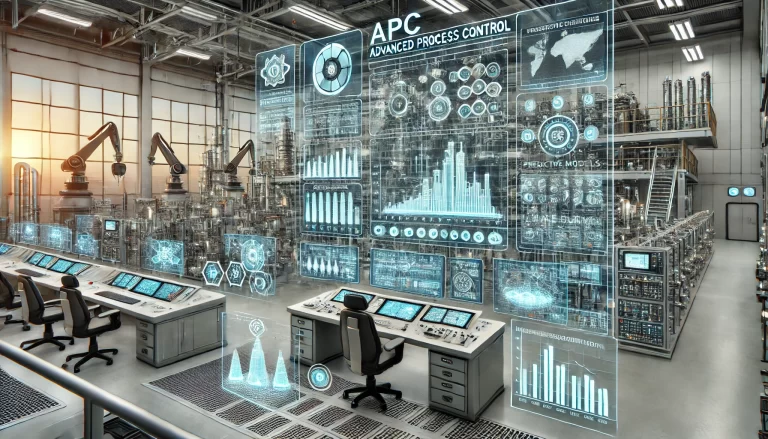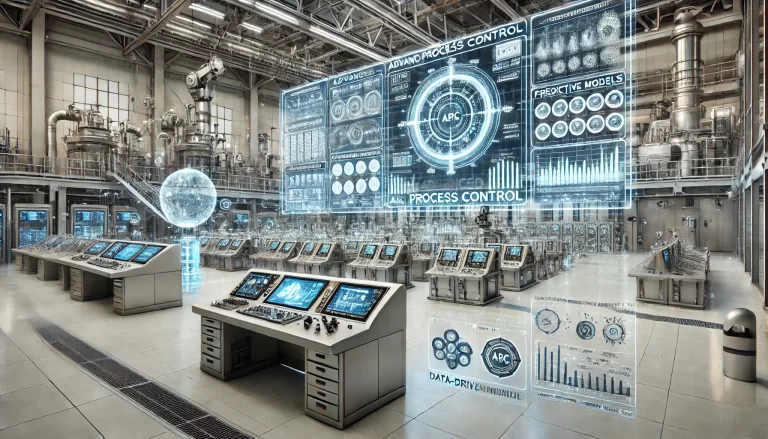Advanced Process Control (APC) is a critical technology in industrial automation, widely used to optimize and enhance the efficiency of complex, multi-variable processes. By employing predictive modeling, optimization algorithms, and advanced control strategies, APC surpasses traditional methods like Proportional-Integral-Derivative (PID) control in precision and effectiveness. Its primary goals include ensuring product consistency, minimizing energy consumption, improving safety, and reducing operational costs.

1. The Principles of APC: Model Predictive Control (MPC)
At the core of APC lies Model Predictive Control (MPC), a control strategy that leverages dynamic process models to predict future behavior and optimize control inputs. Unlike traditional feedback control, MPC not only responds to the current state but also anticipates future system behavior to make optimized decisions based on predefined objectives.
Key Features of MPC:
Prediction and Optimization:
MPC relies on mathematical models to forecast system behavior over a set horizon and optimize control inputs within that timeframe.
Optimization objectives typically include minimizing output errors and control effort while adhering to process constraints like temperature, pressure, and flow limits.
Constraint Handling:
A standout feature of MPC is its explicit ability to manage system constraints. This ensures operational variables such as temperature and pressure remain within safe ranges, even under external disturbances or uncertainties.
Example Application:
In a chemical refining process, MPC ensures precise temperature control in reactors, preventing deviations that could lead to safety hazards or suboptimal product quality.

2. Real-Time Process Optimization
APC, particularly through MPC, enables real-time process optimization, essential in dynamic and high-demand industrial environments. By continuously monitoring real-time data, APC adjusts process parameters to enhance efficiency and maintain product quality.
Benefits:
Energy Efficiency:
In industries like petrochemicals and manufacturing, energy consumption is a significant cost driver. APC optimizes parameters such as reaction temperature and pressure, minimizing energy use while reducing emissions.
Waste Reduction and Yield Improvement:
APC mitigates process fluctuations and operator errors, reducing waste and increasing yield. For instance, in batch chemical reactions, optimized mixing and temperature control ensure consistent product quality and minimal raw material waste.
3. Integration of Machine Learning (ML) and Data-Driven Control
Recent advancements in APC include the integration of Machine Learning (ML) and data-driven control techniques, enabling systems to adapt to changing process conditions without frequent manual calibration or model rebuilding.
Data-Driven Models:
ML algorithms like neural networks and support vector machines are increasingly used to build data-driven process models in scenarios where traditional physical modeling is challenging.
These models analyze historical and real-time data to predict process behavior, providing actionable insights for control systems.
Adaptive Control:
ML enables continuous model refinement based on incoming data, improving predictive accuracy.
As fresh data streams in, the control system autonomously adjusts strategies, enhancing APC’s adaptability to nonlinear and complex industrial processes.

4. Challenges in Implementing APC
Despite its advantages, APC implementation presents several challenges:
High Computational Requirements:
Real-time optimization often demands significant computational power, particularly for large-scale, high-frequency processes. Advances in cloud and edge computing have gradually alleviated this bottleneck by providing scalable and efficient computational resources.
Model Accuracy and Calibration:
APC performance heavily depends on accurate process models, which require regular calibration and validation, especially under changing operational conditions. Employing real-time monitoring and automated model updates can help maintain model accuracy.
Cost and Complexity:
APC systems involve substantial initial investment in hardware, software, and expertise in process modeling, optimization, and control theory. For small and medium-sized enterprises, cost-effective APC solutions tailored to their specific needs could bridge this gap.
5. Applications Across Industries
APC has found extensive use in various industries, particularly in sectors involving complex manufacturing and processing:
Chemical Industry:
APC controls variables such as temperature, pressure, and reactant concentrations to ensure processes remain within optimal ranges, maximizing efficiency.
Example: In polymerization reactions, MPC optimizes feed rates and reactor temperatures to regulate polymer molecular weight distribution.
Oil Refining:
APC optimizes the operation of distillation columns, cracking units, and other equipment, ensuring maximum yield and compliance with product specifications.
Pharmaceutical Industry:
APC enhances processes like mixing, heating, and filtration, ensuring consistent product quality and reducing variability.

6. Conclusion
Advanced Process Control (APC) is a transformative technology that significantly enhances industrial process management through precise modeling and optimization. By leveraging core technologies like Model Predictive Control (MPC), APC improves efficiency, reduces costs, and ensures consistent product quality. However, its implementation faces challenges such as computational demands, model accuracy, and high initial costs. With ongoing advancements in computing and ML integration, APC’s potential continues to expand, paving the way for smarter, more automated production across industries.
Recommendations for Future Development:
Explore the integration of emerging technologies such as AI-powered predictive analytics.
Develop cost-effective APC solutions to support small and medium-sized enterprises.
Invest in training and development to build expertise in APC implementation and maintenance.
